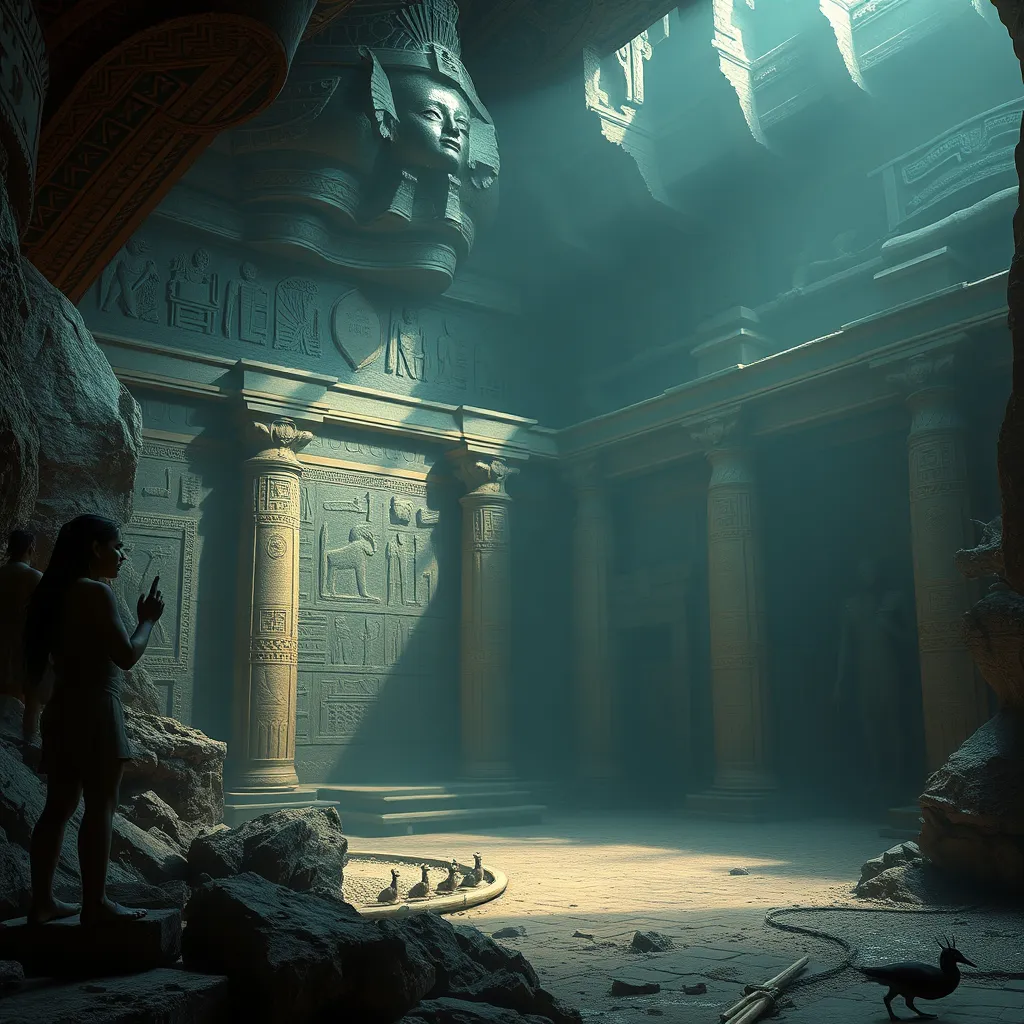The Duat: A Journey Through the Underworld
I. Introduction to the Duat
The Duat, often referred to as the Egyptian underworld, is a pivotal concept in ancient Egyptian mythology. It represents not only a physical realm but also a spiritual journey that individuals undertake after death. In the Duat, the souls of the deceased confront various challenges and deities as they seek to achieve eternal life.
Significantly, the Duat is depicted as a complex landscape filled with both dangers and opportunities for the soul. It operates as a realm of judgment and transformation, indicating the ancient Egyptians’ deep beliefs surrounding the afterlife and the necessity of navigating this mystical space.
II. The Structure of the Duat
The landscape of the Duat is intricate and multifaceted, characterized by various realms and regions that the soul must traverse. It is often described in texts and tomb art as a dark, labyrinthine environment filled with rivers, deserts, and mountains.
Key locations within the Duat include:
- The Hall of Ma’at: This is the site where the heart of the deceased is weighed against the feather of Ma’at, symbolizing truth and justice.
- The Field of Reeds: A paradise akin to the Egyptian version of heaven, where souls that pass the judgment process reside in eternal bliss.
- The Lake of Fire: A place of punishment for those who fail the judgment, where their souls may face annihilation.
III. Deities and Guardians of the Duat
The Duat is populated by numerous gods and goddesses, each playing a crucial role in the journey of the soul. The most notable deities include:
- Osiris: The god of the afterlife and resurrection, who judges the souls of the deceased.
- Anubis: The god of mummification and the protector of graves, guiding souls to their judgment.
- Thoth: The god of wisdom and writing, who records the results of the judgment.
Additionally, the Duat is guarded by various protective spirits, often depicted as hybrid creatures, who assist and guide the deceased in navigating the challenges of the afterlife.
IV. The Journey of the Soul
Upon death, the soul embarks on a profound journey into the Duat. This journey is fraught with trials that test the soul’s worthiness. The process typically involves:
- Preparation: The deceased must be properly mummified and buried with rituals and items that will aid them in the afterlife.
- Crossing the Waters: The soul must navigate the perilous waters of the Duat, often depicted as a chaotic river filled with dangers.
- Encounters with Serpent Gods: The deceased may encounter various serpent deities that pose threats, which they must overcome using spells and knowledge.
V. The Weighing of the Heart
One of the most crucial aspects of the Duat is the Weighing of the Heart ceremony. This judgment process is pivotal in determining the fate of the soul. During this process:
- The heart of the deceased is placed on one side of a scale, while the feather of Ma’at is placed on the other.
- If the heart is lighter than the feather, it indicates a life lived in accordance with Ma’at, and the soul is granted passage to the Field of Reeds.
- If the heart is heavier, it signifies a life of wrongdoing, leading to the soul being devoured by Ammit, a fearsome creature that embodies the consequences of a life of sin.
VI. Symbolism and Art in Duat Depictions
The Duat has been a profound source of artistic inspiration, reflected in tomb art and ancient texts. Common symbols and motifs include:
- The Ankh: Symbolizing life and immortality, often depicted in the hands of deities.
- Lotus Flowers: Representing rebirth and the cycle of life, frequently included in burial art.
- Scarab Beetles: Symbolizing transformation and protection, often associated with the sun god Ra.
These artistic representations reflect the Egyptians’ beliefs about life, death, and the afterlife, serving as both a guide and a comfort for the deceased on their journey through the Duat.
VII. The Influence of the Duat in Modern Culture
The concept of the Duat has permeated modern culture, appearing in various forms of literature, film, and art. Notable references include:
- Literature: Authors such as Rick Riordan have incorporated elements of the Duat into popular series like “The Kane Chronicles.”
- Film: Movies exploring Egyptian mythology often depict the Duat as a mystical realm filled with adventure and peril.
- Art: Contemporary artists have drawn inspiration from Duat imagery, reinterpreting its themes of death and rebirth.
The Duat continues to shape contemporary beliefs and practices regarding death, influencing spiritual exploration and the quest for understanding life after life.
VIII. Conclusion
In conclusion, the Duat holds immense importance in understanding ancient Egyptian culture, reflecting their beliefs about the afterlife and the journey of the soul. Its intricate structure, rich symbolism, and the profound narratives surrounding it offer a window into the spiritual life of the ancient Egyptians.
Moreover, the enduring legacy of the Duat in modern spiritual discourse highlights its significance beyond ancient times, inviting contemporary audiences to explore themes of mortality, transformation, and the mysteries of what lies beyond.





